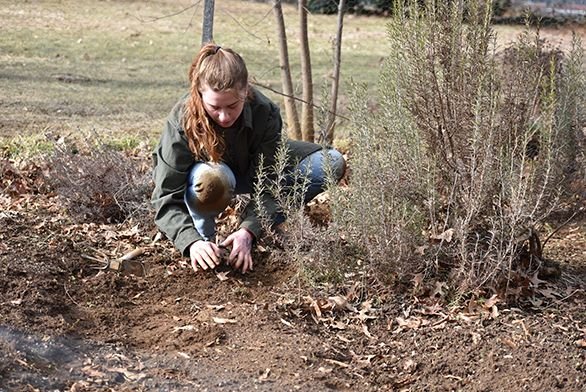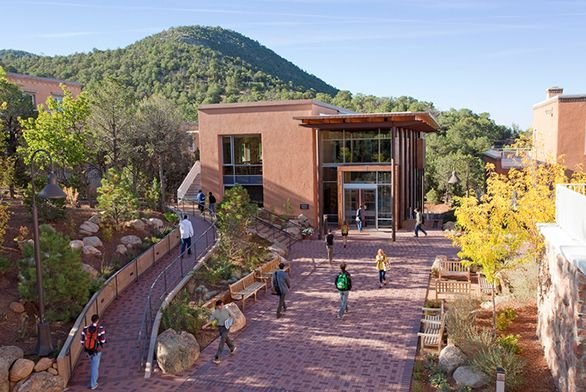Stewards of the Environment
February 7, 2018 | By Tim Pratt

St. John’s College is the newest member of the Maryland Green Registry, a designation that complements a lengthy history of environmental stewardship on the college’s Annapolis and Santa Fe campuses.
The registry, managed by the Maryland Department of the Environment (MDE), comprises colleges, businesses and other organizations that have taken steps toward achieving environmental sustainability. Membership gives St. John’s access to MDE resources and tips that will help the college incorporate more “green” practices in the future.
The designation comes on the heels of Annapolis President Panayiotis Kanelos establishing an Environmental Sustainability Task Force, made up students, faculty and staff, in October.
“Johnnies are some of the most conscientious and insightful college students anywhere,” Kanelos says. “This is why I convened an environmental sustainability initiative: to attack common environmental issues through dialogue and creativity. Sustaining the college requires that we cultivate a great concern for the place in which we live and flourish.”
Collegewide Efforts
The college’s recent green efforts in Annapolis demonstrate a continued commitment to sustainability on both campuses.
In Santa Fe, 78 solar panels are found on St. John’s rooftops. The panels provide welcome alternative electricity to the campus building electrical grid.

In addition, the two newest buildings on the Santa Fe campus received LEED certifications. LEED (Leadership in Energy and Environmental Design) is a rating system devised by the U.S. Green Building Council to evaluate the environmental performance of a building. Levan Hall, completed eight years ago, is Gold LEED certified while the Winiarski Student Center, completed six years ago, is Silver LEED certified.
Santa Fe also has three water catchment systems that harvest 30,000 gallons of rooftop water for use in landscape drip irrigation.
Staff on both campuses have been replacing interior and exterior lighting with energy efficient LED fixtures and lamps.
Dining hall operators A’viands in Santa Fe and Bon Appetit in Annapolis purchase locally sourced food, moves meant to reduce the college’s carbon footprint. Both providers take part in food composting programs as well.
While recycling bins are found throughout both campuses, Annapolis recently purchased new containers for faculty and staff offices.
The task force in Annapolis began education and outreach efforts in January—including emails, flyers and signs throughout campus—and has additional education efforts planned throughout the year.
In addition, the task force is planning a campus cleanup this spring, including areas along the living shoreline. The shoreline, completed along College Creek in 2006, consists of a small rock sill backfilled with sand and marsh plants at different elevations to create a tidal marsh. The sill replaced a deteriorating wooden bulkhead.
Since 2002 a rainwater garden has helped control runoff and prevent pollution of College Creek. The garden, a gift from the Class of 1993, contains a variety of trees and grasses native to Maryland and allows for natural collection of rainwater. The student farm club works a vegetable garden on campus, too. This year, the club is planting carrots, spinach, lettuce and other vegetables.
Among other efforts, recent improvements to Greenfield Library in Annapolis made the building more energy efficient. The ongoing renovation of McDowell Hall will achieve similar results.
The task force is investigating several additional possible short- and long-term projects, too, including ways to help the college reduce printer and paper use, and conserve water. The group will make recommendations for more responsible, efficient and cost-effective practices later this year.

